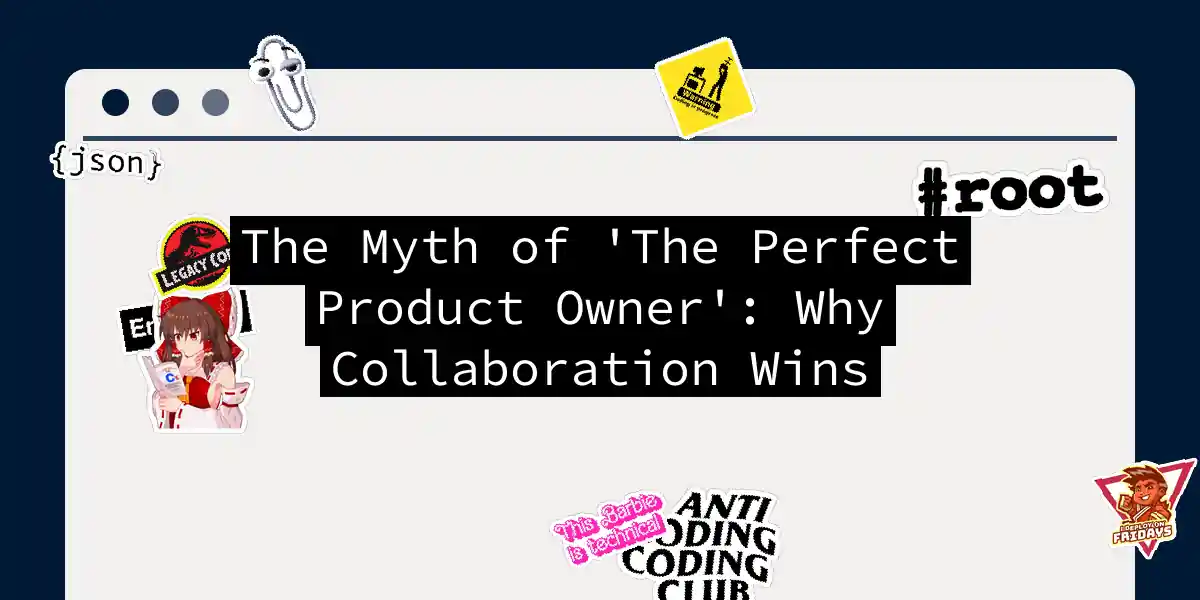The Elusive Perfect Product Owner
In the realm of software development, particularly within Agile and Scrum frameworks, the role of the Product Owner is often shrouded in a halo of perfection. This mythical figure is expected to be a visionary, a communicator, a prioritizer, and a decision-maker all rolled into one. However, the reality is far more nuanced. The perfect Product Owner is a myth, and it’s collaboration that truly drives success.
The Role of the Product Owner: A Complex Web
The Product Owner is the linchpin between the development team, stakeholders, and end-users. Their key responsibilities include defining the product vision, maintaining the Product Backlog, and ensuring that the Scrum Team understands the overall transformation vision[1].
The Communication Conundrum
One of the most significant challenges faced by Product Owners is effective communication. The gap between the Product Owner’s vision and the Developers’ understanding can be vast, leading to misunderstandings and inefficiencies. To bridge this gap, regular meetings such as Sprint Planning, Daily Scrum, and Sprint Reviews are crucial. These meetings provide a platform for the Product Owner to convey the product’s strategic vision and for the Developers to align their work accordingly[1][4].
User Stories: The Bridge to Understanding
User Stories are a powerful tool in bridging the communication gap. They describe features from the user’s perspective, making it easier for Developers to understand the requirements. A well-crafted User Story includes the who, what, and why of the feature, ensuring that everyone is on the same page.
Collaboration in Action
Effective collaboration is not just about attending meetings; it involves active participation and mutual respect. Here are some best practices that make collaboration a success:
Open Communication
Open and transparent communication is the backbone of any successful software project. It empowers team members to contribute their ideas, offer feedback, and propose alternative solutions. This culture of openness ensures that information silos are broken down, and everyone is aligned towards the common goal[2][5].
Code Reviews and Pair Programming
Code reviews and pair programming are excellent ways to foster collaboration among Developers. Code reviews ensure that the code is stable and meets the required standards, while pair programming allows Developers to learn from each other and tackle complex problems together[2].
Visual Management Tools
Tools like Kanban boards, JIRA, Trello, and Confluence provide a visual representation of the work and progress. These tools help in maintaining transparency and ensuring that everyone is aligned on project goals and progress[4].
The Power of Feedback
Feedback is a critical component of collaboration. It fosters a culture of continuous improvement and ensures that the final product meets the user’s needs. Sprint Retrospectives, where the team reflects on what went well and what could be improved, are essential for this. Additionally, sharing stakeholder reviews with the development team helps in meeting their needs and building mutual trust and respect[4].
Design Thinking and Integration
Design thinking is a methodology that emphasizes understanding user needs and involves constant communication and collaboration within development teams. It encourages prototype testing and iterative design to refine solutions based on user feedback. This approach ensures that the final product is user-centric and meets the desired outcomes[5].
The Myth Busted
The perfect Product Owner is a myth because no single individual can possess all the necessary skills and knowledge to single-handedly drive a project to success. It is the collective effort of the team, the open communication, and the collaborative environment that make a project successful.
In conclusion, while the Product Owner plays a vital role in defining the product vision and maintaining the Product Backlog, it is the collaboration between the Product Owner, Developers, and other stakeholders that truly drives the success of a software project. By embracing open communication, using the right tools, and fostering a culture of continuous improvement, teams can achieve far more than any individual could alone.
So, the next time you hear someone talk about the perfect Product Owner, you can smile knowingly, because you understand that it’s not about one person; it’s about the team, the collaboration, and the shared vision that makes software development truly magical.
